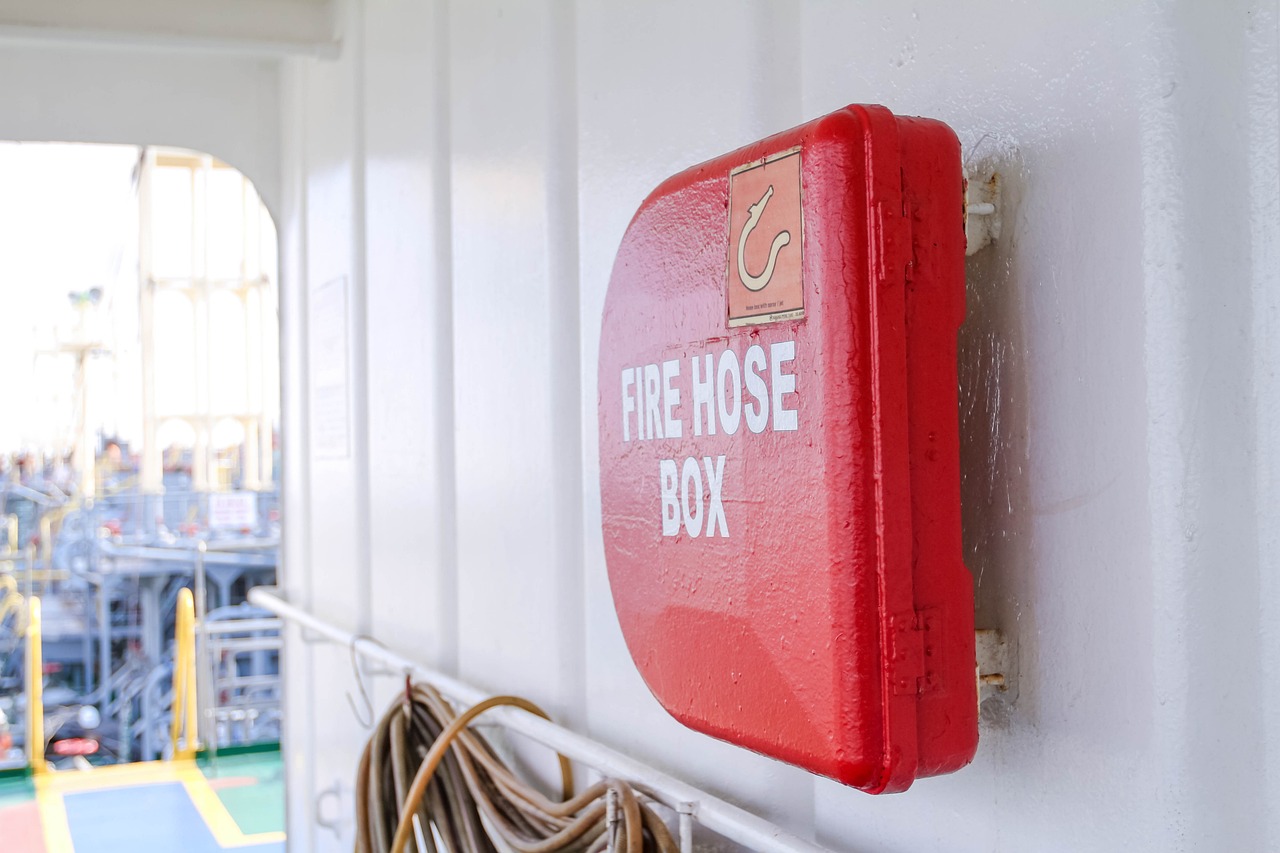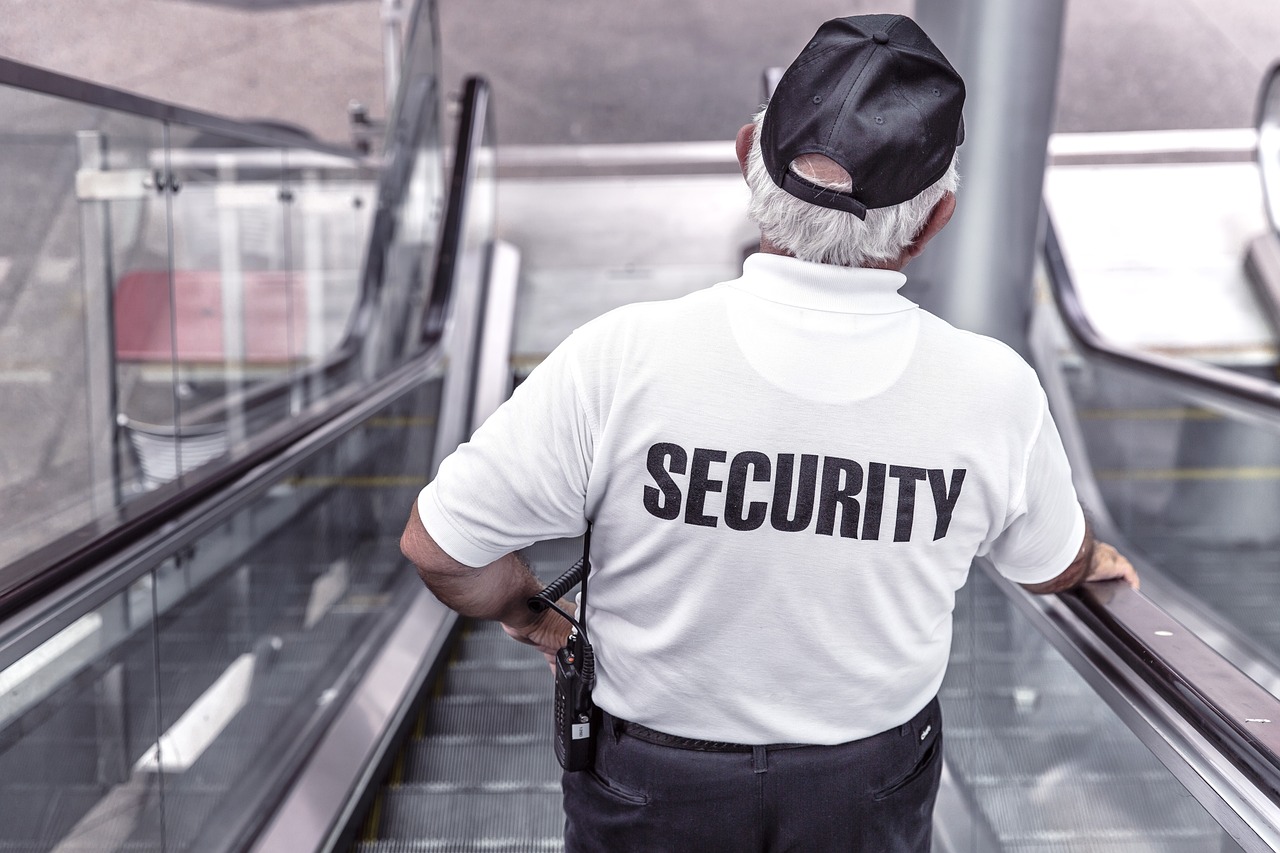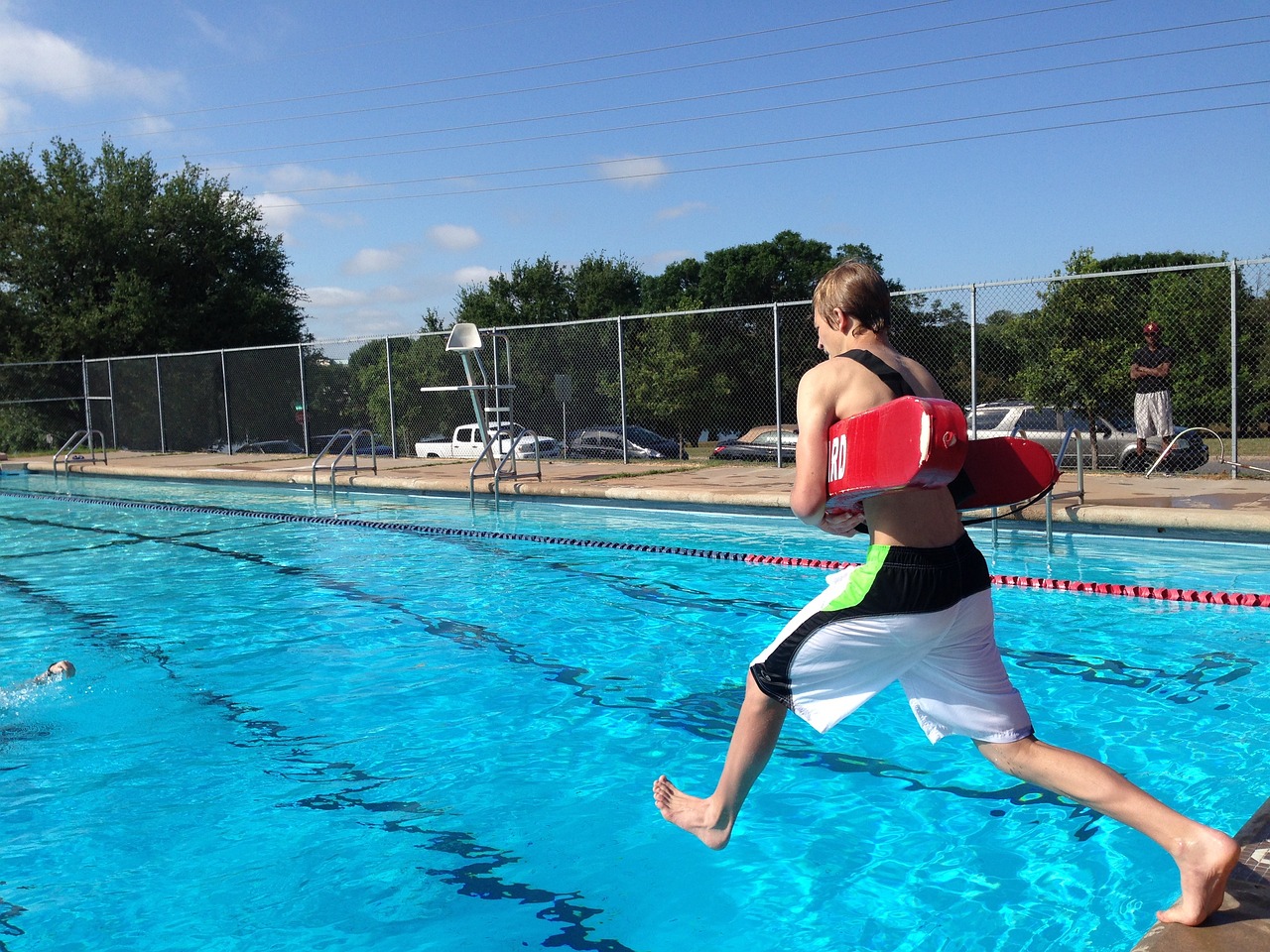The Impact of Human Behavior on the World of Safety
When we think about safety, we often picture hard hats, safety goggles, and strict protocols. But what if I told you that the most critical element in ensuring safety is not just the rules or equipment, but rather the human behavior behind them? Yes, that's right! The decisions we make, our perceptions, and even our emotional states can significantly influence safety outcomes across various sectors, from workplaces to public health and emergency response.
Human behavior is a complex web of actions, reactions, and interactions. Every day, in every environment, individuals make choices that can either enhance or compromise safety. For instance, consider a construction site where workers are required to wear helmets. If a worker decides to forgo this safety gear because they feel it’s unnecessary, they are not just risking their own safety but potentially affecting the safety of their colleagues as well. This illustrates how individual behavior can ripple through an entire organization.
Moreover, the impact of human behavior extends beyond individual choices. It shapes the very culture of safety within organizations. A workplace that fosters open communication and encourages employees to voice safety concerns is likely to experience fewer accidents. On the other hand, an environment where employees feel discouraged from reporting unsafe conditions can lead to a culture of silence, where problems fester and grow. This highlights the need for a behavioral awareness approach in promoting safety, where individuals are not only trained in protocols but are also encouraged to understand the implications of their actions.
In this article, we will explore the multifaceted influence of human behavior on safety practices. We’ll dive into the role of human factors in safety management, the effectiveness of behavioral safety programs, and the psychological aspects that drive our decisions during emergencies. By understanding these elements, we can better appreciate how to create safer environments, not just through rules and regulations, but by fostering a culture that prioritizes safe behaviors.
So, how does human behavior truly impact safety? Let’s unravel this intricate relationship and discover the keys to enhancing safety through better understanding and modification of human actions.
Understanding human factors is crucial in safety management. Human factors encompass a wide range of elements including cognitive biases, emotional responses, and decision-making processes. These factors significantly affect both individual and organizational safety outcomes. For example, cognitive biases such as overconfidence can lead individuals to underestimate risks, while stress can impair judgment and decision-making abilities. Recognizing these influences is the first step towards improving safety practices.
Behavioral safety programs aim to modify unsafe behaviors through training and awareness. These programs focus on identifying at-risk behaviors and implementing strategies to encourage safer practices. Various approaches have been developed over the years, each with varying degrees of effectiveness. By examining the successes and failures of these programs, we can glean insights into what works best in promoting a culture of safety.
One effective strategy within behavioral safety programs is the use of positive reinforcement. This technique encourages safe behaviors by rewarding individuals for complying with safety protocols. For example, a company might implement a reward system where employees receive recognition or small incentives for consistently following safety guidelines. Case studies have shown that such strategies can lead to significant reductions in incidents and a more proactive approach to safety.
Incentives can significantly boost participation in safety programs. Different types of incentives, such as monetary rewards, extra time off, or public recognition, can motivate employees to engage more actively in safety initiatives. The effectiveness of these incentives often hinges on how well they align with the values and motivations of the workforce.
Providing feedback is essential for reinforcing safe behaviors. Constructive feedback can lead to continuous improvement in safety practices. When employees receive timely and specific feedback about their safety-related actions, they are more likely to adjust their behaviors accordingly. This creates a dynamic where safety becomes a shared responsibility among all team members.
Effective training programs raise awareness about safety risks and equip employees with the knowledge necessary to navigate potential hazards. Various training methodologies, including hands-on simulations and interactive workshops, play a crucial role in enhancing employee knowledge and behavior regarding safety protocols. These initiatives not only educate employees but also empower them to take ownership of their safety and that of their colleagues.
Psychology plays a vital role in understanding safety behavior. Factors such as stress, perception, and motivation can significantly influence how individuals respond to safety protocols. For instance, high-stress environments can lead to impaired decision-making, resulting in unsafe actions. By understanding these psychological aspects, organizations can better tailor their safety programs to address the specific needs and behaviors of their workforce.
Stress can severely impair decision-making abilities, leading individuals to make hasty or unsafe choices. In high-pressure environments, such as emergency response situations, the ability to remain calm and think clearly can be the difference between safety and disaster. Organizations must recognize the impact of stress on performance and implement strategies to help employees manage stress effectively.
Understanding what motivates individuals to prioritize safety is essential for creating effective safety programs. Both intrinsic motivators, such as personal values and beliefs, and extrinsic motivators, such as rewards and recognition, play a role in influencing safety behavior. By tapping into these motivators, organizations can foster a culture where safety is seen as a shared value rather than just a set of rules.
Human behavior significantly impacts emergency response effectiveness. During crises, the actions of individuals can either mitigate or exacerbate risks and outcomes. Understanding how people react in emergencies is crucial for improving response strategies and ensuring public safety.
Community response plays a critical role in emergency situations. Factors such as communication, preparedness, and social dynamics influence public behavior during crises. Effective communication strategies can help guide public response and foster a sense of community resilience.
Training individuals for emergency scenarios can enhance response effectiveness. Simulations and preparedness drills are essential for shaping behavior during actual emergencies. By practicing responses to potential crises, individuals become more adept at handling real-life situations, ultimately leading to better outcomes.
- What is the role of human behavior in safety? Human behavior influences safety practices by affecting individual choices, organizational culture, and overall safety outcomes.
- How can behavioral safety programs improve safety? These programs modify unsafe behaviors through training, positive reinforcement, and feedback mechanisms, fostering a culture of safety.
- What psychological factors impact safety behavior? Stress, perception, and motivation are key psychological factors that influence how individuals respond to safety protocols.
- Why is training important for emergency response? Training prepares individuals for crisis situations, enhancing their ability to respond effectively and safely during emergencies.

The Role of Human Factors in Safety
Understanding human factors is crucial in safety management because our behaviors, perceptions, and cognitive processes directly influence how we approach safety in various environments. Think about it: when you step into a workplace, your decisions—whether to wear a helmet, report a hazard, or follow safety protocols—are all shaped by your understanding and awareness of potential risks. This means that if we can improve our understanding of how people think and behave, we can significantly enhance safety outcomes.
One of the most fascinating aspects of human factors is the concept of cognitive biases. These are the mental shortcuts that our brains take, which can lead us to make irrational or unsafe decisions. For instance, the optimism bias may cause someone to believe that accidents are less likely to happen to them than to others, resulting in complacency regarding safety measures. Similarly, the confirmation bias can lead individuals to disregard evidence that contradicts their preconceived notions about safety practices. Recognizing these biases is the first step toward mitigating their impact on safety behavior.
Moreover, the decision-making processes that individuals undergo play a significant role in safety outcomes. When faced with a high-pressure situation, such as a workplace accident or an emergency, the ability to make quick and effective decisions can be the difference between safety and disaster. Studies have shown that individuals under stress may revert to automatic behaviors, which are often not the safest choices. This emphasizes the need for training that not only educates employees about safety protocols but also prepares them to make sound decisions under pressure.
To illustrate the importance of human factors in safety, consider the following table that summarizes common cognitive biases and their potential effects on safety behavior:
| Cognitive Bias | Description | Impact on Safety |
|---|---|---|
| Optimism Bias | Belief that negative events are less likely to happen to oneself | Complacency towards safety measures |
| Confirmation Bias | Favoring information that confirms existing beliefs | Ignoring safety warnings or evidence |
| Anchoring Bias | Relying heavily on the first piece of information encountered | Difficulty adapting to new safety protocols |
In conclusion, human factors are a pivotal element in the realm of safety. By understanding the cognitive biases and decision-making processes that affect our behavior, organizations can implement more effective safety management strategies. This understanding not only helps in reducing incidents but also fosters a culture of safety where everyone feels responsible for maintaining a secure environment. So, the next time you're in a safety meeting or training session, remember that your mind is a powerful tool—use it wisely!

Behavioral Safety Programs
Behavioral safety programs are essential in the quest to create a safer working environment. These programs focus on modifying unsafe behaviors through targeted training and awareness initiatives. Imagine a workplace where every employee is not just aware of the safety protocols, but actively engaged in practicing them. That’s the power of behavioral safety! By understanding the psychology behind human actions, organizations can develop strategies that not only reduce incidents but also foster a culture of safety that permeates every level of the workforce.
One of the most effective approaches in behavioral safety programs is the implementation of positive reinforcement techniques. Rather than simply punishing unsafe behaviors, these programs reward employees for adhering to safety practices. Think of it as training a puppy: when the pup sits on command, you give it a treat. Similarly, when employees demonstrate safe behaviors, they receive recognition or rewards. This creates a positive feedback loop where individuals are motivated to continue practicing safe behaviors. Case studies have shown that organizations that employ these techniques see a significant drop in workplace accidents.
Incentives play a crucial role in boosting participation in safety programs. They can range from simple recognition in company newsletters to tangible rewards like gift cards or an extra day off. The table below illustrates different types of incentives and their effectiveness:
| Type of Incentive | Effectiveness |
|---|---|
| Recognition Programs | High – boosts morale and encourages participation |
| Monetary Bonuses | Very High – immediate gratification |
| Additional Time Off | Moderate – valued by employees but less frequent |
Moreover, feedback mechanisms are crucial for reinforcing safe behaviors. Constructive feedback can lead to continuous improvement in safety practices. When employees receive timely and specific feedback about their safety performance, they are more likely to adjust their actions accordingly. It’s like having a coach who helps you refine your technique; you become better with every piece of advice you receive.
In summary, behavioral safety programs are not just about rules and regulations; they are about understanding human behavior and creating an environment where safety is a shared responsibility. By employing positive reinforcement, offering incentives, and establishing effective feedback mechanisms, organizations can significantly enhance their safety culture and reduce incidents. The journey towards a safer workplace is ongoing, but with the right strategies in place, we can make remarkable strides toward achieving it.

Positive Reinforcement Techniques
When it comes to fostering a culture of safety in the workplace, can be game-changers. Imagine a scenario where employees are not just following safety protocols because they have to, but because they want to. This shift in mindset is largely driven by the principles of positive reinforcement, which focus on rewarding desired behaviors rather than merely punishing unsafe actions. By implementing these techniques, organizations can create an environment that not only values safety but also encourages individuals to take ownership of their actions.
One of the most effective approaches is to recognize and reward safe behaviors consistently. This can be as simple as verbal praise during team meetings or more structured rewards like gift cards or extra time off. For example, a company might implement a monthly recognition program where employees who demonstrate exemplary safety practices are highlighted and rewarded. This not only boosts morale but also sets a benchmark for others to aspire to. The psychological impact of recognition is significant; it makes individuals feel valued and reinforces their commitment to safety.
Another effective strategy is the use of gamification in safety programs. By turning safety compliance into a game, organizations can engage employees in a fun and competitive way. For instance, teams can be awarded points for adhering to safety protocols, with the opportunity to win prizes at the end of a specified period. This not only motivates employees to follow safety measures but also fosters teamwork and camaraderie as they work together towards a common goal. A study conducted by XYZ Corporation found that gamification increased compliance rates by 30%, demonstrating its effectiveness in promoting safe behaviors.
Moreover, feedback mechanisms play a crucial role in positive reinforcement. Providing timely and constructive feedback allows employees to understand how their actions contribute to safety outcomes. For instance, if a supervisor notices an employee consistently wearing their safety gear, a simple acknowledgment can go a long way. It’s essential to communicate not just what was done right, but also how it positively impacts the overall safety culture. This creates a feedback loop where employees feel encouraged to maintain safe practices.
To illustrate the impact of positive reinforcement techniques, consider the following table showcasing the results of a safety program that implemented these strategies:
| Technique | Implementation | Outcome |
|---|---|---|
| Monthly Recognition Program | Employees nominated for safe practices | 25% reduction in incidents |
| Gamification | Points awarded for safety compliance | 30% increase in compliance |
| Feedback Mechanisms | Regular feedback sessions | Improved morale and engagement |
In conclusion, positive reinforcement techniques are not just about rewarding compliance; they are about creating a vibrant safety culture where individuals feel motivated and valued. By recognizing safe behaviors, implementing gamification, and providing meaningful feedback, organizations can significantly enhance their safety outcomes. When employees feel appreciated and engaged, they are more likely to prioritize safety, ultimately leading to a safer workplace for everyone.
- What is positive reinforcement? Positive reinforcement is a behavioral strategy that involves rewarding desired behaviors to encourage their repetition.
- How can positive reinforcement improve workplace safety? By rewarding safe behaviors, employees are motivated to prioritize safety, leading to a reduction in accidents and incidents.
- What are some examples of positive reinforcement techniques? Examples include verbal praise, recognition programs, gamification, and constructive feedback.
- How does feedback contribute to positive reinforcement? Feedback helps employees understand the impact of their actions, reinforcing safe behaviors and encouraging continuous improvement.

Incentives and Rewards
When it comes to fostering a culture of safety, play a pivotal role. Imagine you're part of a team where your safe practices are recognized and celebrated. Doesn't that sound motivating? The essence of these programs is to encourage individuals to adopt safe behaviors by offering tangible rewards for their compliance. This approach not only promotes safety but also builds a sense of community and accountability among team members.
Incentives can take various forms, and understanding what resonates with your team is key. Here are some common types of incentives that organizations implement:
- Monetary Rewards: Cash bonuses or gift cards for individuals or teams that consistently meet safety goals.
- Recognition Programs: Public acknowledgment during meetings or through company newsletters to highlight safe practices.
- Additional Time Off: Granting extra vacation days as a reward for achieving safety milestones.
- Safety Gear or Equipment: Providing high-quality safety equipment as a reward can also encourage compliance.
But it’s not just about throwing money or gifts at the problem. The effectiveness of these incentives hinges on their ability to resonate with employees. For instance, a cash bonus might excite one person, while another might prefer a day off to spend time with family. Tailoring the rewards to fit the preferences of your team can significantly enhance participation and commitment to safety practices.
Moreover, the psychological impact of rewards cannot be underestimated. When employees see that their safe actions are appreciated, it reinforces their behavior and encourages others to follow suit. This creates a ripple effect, where safety becomes a shared value rather than a mere obligation. A well-structured incentive program can lead to a noticeable decline in incidents, as individuals feel more empowered to prioritize safety.
To illustrate this, let’s look at a case study from a manufacturing company that implemented a rewards program. After introducing a monthly safety recognition award, the company reported a 30% reduction in workplace accidents within the first six months. Employees were not only motivated by the rewards but also felt a sense of pride in contributing to a safer work environment. This example demonstrates that when people feel valued for their safe behavior, they are more likely to continue those practices.
In conclusion, incentives and rewards are not merely a bonus; they are an essential part of a comprehensive safety strategy. By recognizing and rewarding safe behaviors, organizations can cultivate a proactive safety culture that benefits everyone. It’s a win-win situation: employees feel appreciated, and organizations experience fewer accidents and improved morale. So, what’s stopping you from implementing such programs in your workplace?

Feedback Mechanisms
Feedback mechanisms are the unsung heroes of any effective safety program. They act as the connective tissue between established safety protocols and the individuals who must adhere to them. Imagine trying to steer a ship without a compass; that’s how an organization feels without a robust feedback system. Feedback not only reinforces safe behaviors but also highlights areas needing improvement, creating a continuous loop of learning and adaptation.
One of the most compelling aspects of feedback is its ability to transform individual actions into collective safety outcomes. When employees receive constructive feedback, they are more likely to internalize safety protocols rather than merely going through the motions. This process fosters a culture of accountability where everyone feels responsible for maintaining safety standards. For instance, when a supervisor provides immediate feedback after observing a safety violation, it not only corrects the behavior in real time but also serves as a reminder to others about the importance of adhering to safety measures.
Moreover, feedback can take various forms, each with its unique advantages. Here are some common types of feedback mechanisms used in safety programs:
- Verbal Feedback: Direct conversations between supervisors and employees can clarify expectations and address concerns immediately.
- Written Reports: Documenting safety incidents and providing written feedback allows for a more thorough analysis and can be revisited for future learning.
- Peer Reviews: Encouraging team members to provide feedback to one another can create a supportive environment where everyone learns from each other's experiences.
- Surveys and Questionnaires: These tools can gather broader insights into safety perceptions and practices, allowing management to identify trends and areas for improvement.
To illustrate the effectiveness of feedback mechanisms, consider the following table that outlines a case study from a manufacturing company:
| Feedback Type | Implementation Method | Outcome |
|---|---|---|
| Verbal Feedback | Daily safety briefings | 30% reduction in safety violations over 6 months |
| Written Reports | Monthly safety audits | Improved compliance rates by 25% |
| Peer Reviews | Team safety assessments | Enhanced team collaboration and awareness |
| Surveys | Quarterly employee surveys | Identified key areas for training improvements |
As seen in the table, the implementation of various feedback mechanisms led to tangible improvements in safety outcomes. This reinforces the idea that when employees feel heard and valued, they are more likely to engage in safe practices actively. Moreover, constructive feedback fosters an environment of trust where individuals feel safe to report unsafe conditions or behaviors without fear of retribution.
In conclusion, feedback mechanisms are vital for promoting a proactive safety culture. By providing timely, constructive, and varied feedback, organizations can empower their employees to take ownership of safety practices, leading to a safer work environment for everyone involved. So, if you’re looking to enhance your safety program, consider investing in a robust feedback system—it could be the key to unlocking a safer future.
Q1: How can feedback be effectively integrated into a safety program?
A1: Feedback can be integrated through regular safety meetings, written reports, and real-time observations. Encouraging open communication and creating a culture where feedback is welcomed can significantly enhance safety practices.
Q2: What are some challenges in implementing feedback mechanisms?
A2: Challenges may include resistance from employees, lack of time for feedback sessions, and the potential for misunderstandings. It's crucial to address these challenges through training and clear communication.
Q3: How often should feedback be provided?
A3: Feedback should be provided regularly and as close to the event as possible. This can be daily, weekly, or monthly, depending on the nature of the work and the specific safety protocols in place.

Training and Awareness Initiatives
When it comes to safety in any environment, whether it’s a bustling workplace or a serene public space, the importance of cannot be overstated. These programs are designed to equip individuals with the knowledge and skills necessary to recognize potential hazards and respond appropriately. Imagine walking into a room filled with people who are unaware of the dangers lurking around them. It’s a recipe for disaster! That’s why implementing effective training programs is crucial in fostering a culture of safety.
One of the key components of these initiatives is interactive training sessions. Unlike traditional classroom settings where information is merely lectured, interactive sessions engage participants through discussions, role-playing, and real-life scenarios. For example, consider a fire drill. Instead of just telling employees what to do in case of a fire, they practice evacuating the building under simulated conditions. This hands-on experience not only reinforces their learning but also builds confidence in their ability to act during an actual emergency.
Moreover, awareness initiatives often utilize visual aids and technology to enhance understanding. Infographics, videos, and even virtual reality simulations can illustrate safety protocols in an engaging manner. A well-placed infographic in a break room reminding employees of safety procedures can serve as a constant visual cue, reinforcing their training. This approach helps to keep safety at the forefront of everyone’s mind, turning awareness into action.
In addition to traditional training methods, organizations are increasingly adopting e-learning platforms. These platforms offer flexibility, allowing employees to complete training modules at their own pace. The convenience of online training means that even the busiest employees can find time to learn about safety protocols. Furthermore, e-learning can be updated easily to reflect the latest safety regulations and practices, ensuring that everyone is on the same page.
Another effective strategy is to incorporate peer-led training sessions. When employees learn from each other, it fosters a sense of camaraderie and trust. For instance, a seasoned employee can share their experiences and insights on safety practices, making the training more relatable and impactful. This peer-to-peer approach not only enhances learning but also encourages a collective responsibility towards safety.
To gauge the effectiveness of these training initiatives, organizations often implement assessment tools. These can include quizzes, practical demonstrations, or feedback surveys. By assessing knowledge retention and application, companies can identify areas that need improvement and tailor their training programs accordingly. It’s like fine-tuning an engine; regular checks ensure everything runs smoothly and efficiently.
In summary, training and awareness initiatives are vital in promoting a proactive safety culture. By combining interactive sessions, innovative technology, peer-led discussions, and assessment tools, organizations can significantly enhance their safety practices. Remember, safety isn’t just a set of rules; it’s a mindset that needs to be cultivated through continuous learning and awareness. So, let’s make safety a priority and invest in the training that will protect us all!
- What are the main goals of safety training initiatives?
The primary goals include enhancing awareness of safety risks, teaching safe practices, and ensuring compliance with safety regulations. - How often should safety training be conducted?
Safety training should be conducted regularly, with refresher courses at least annually, and whenever new procedures or equipment are introduced. - What types of training methods are most effective?
Interactive methods, including simulations, role-playing, and e-learning, have proven to be highly effective in engaging participants and reinforcing learning. - How can organizations measure the effectiveness of their training programs?
Organizations can use assessments, feedback surveys, and incident reports to evaluate the effectiveness of their training programs and make necessary improvements.

Psychological Aspects of Safety
The realm of safety is not just about protocols and procedures; it deeply intertwines with the psychological aspects of human behavior. Understanding these psychological dimensions can significantly enhance how we approach safety in various environments. For instance, have you ever considered how stress might cloud your judgment during a critical situation? It's a common scenario, and recognizing this can be the first step towards improving safety outcomes. When individuals are under pressure, their decision-making abilities can diminish, leading to potentially dangerous situations.
To delve deeper, let's explore how stress, perception, and motivation play essential roles in influencing safety-related actions. Stress, in particular, can act as a double-edged sword. While a certain level of stress can motivate individuals to perform better, excessive stress can lead to impaired judgment and increased risk-taking behaviors. Imagine a firefighter entering a burning building; their ability to think clearly can be severely compromised if they're overwhelmed by stress. This is why understanding the relationship between stress levels and safety outcomes is crucial, especially in high-pressure environments.
Moreover, the perception of risk varies greatly among individuals. Some may underestimate the dangers involved in specific tasks, while others may overestimate them. This discrepancy can lead to either complacency or unnecessary fear. For example, a construction worker might perceive wearing a helmet as an inconvenience, while another might see it as a vital safety measure. This difference in perception can significantly influence overall safety practices within a workplace.
Motivational factors also play a pivotal role in shaping safety behaviors. Understanding what drives individuals to prioritize safety can be a game-changer. People are motivated by both intrinsic and extrinsic factors. Intrinsic motivators include personal values and a sense of responsibility, while extrinsic motivators might involve rewards, recognition, or compliance with regulations. For instance, a worker who feels personally responsible for their team's safety is more likely to adhere to safety protocols than one who views them as mere formalities.
In summary, the psychological aspects of safety encompass a complex interplay of stress, perception, and motivation. By fostering a deeper understanding of these elements, organizations can create a more robust safety culture. This involves not only implementing safety measures but also addressing the psychological factors that influence behavior. After all, when it comes to safety, it’s not just about the rules; it’s about how people think and feel about those rules.
- What role does stress play in safety?
Stress can impair decision-making abilities, leading to unsafe actions, especially in high-pressure environments. - How does perception influence safety behavior?
Individuals' perceptions of risk can vary, affecting their adherence to safety protocols. - What motivates individuals to prioritize safety?
Both intrinsic and extrinsic factors motivate individuals, including personal values and rewards.

Stress and Decision Making
Stress is an inevitable part of life, especially in high-pressure environments where the stakes are high. Whether it's a tight deadline at work or a critical incident requiring immediate action, stress can significantly impact our ability to make sound decisions. When faced with stress, our brains often enter a state of survival mode, which can lead to impulsive choices and diminished judgment. Imagine a firefighter rushing into a burning building; the stress of the situation can cloud their judgment, potentially leading to unsafe actions.
Research has shown that elevated stress levels can impair cognitive functions such as attention, memory, and problem-solving skills. In fact, studies indicate that when individuals experience high levels of stress, their decision-making processes can become skewed, leading to a higher likelihood of mistakes. For instance, in a workplace setting, an employee under stress may overlook critical safety protocols, ultimately putting themselves and others at risk. This phenomenon raises the question: how can we mitigate the effects of stress on decision-making in safety-critical situations?
To address this challenge, organizations must prioritize stress management strategies. Here are some effective approaches:
- Mindfulness Training: Encouraging mindfulness can help individuals remain present and focused, reducing the impact of stress on their decision-making abilities.
- Regular Breaks: Implementing scheduled breaks during high-pressure tasks can provide employees with the opportunity to recharge and refocus.
- Support Systems: Establishing a robust support system, including access to mental health resources, can help individuals cope with stress more effectively.
Moreover, understanding the psychological aspects of stress can empower individuals to recognize their stress triggers and develop coping mechanisms. For instance, some people may respond to stress with avoidance, while others might become overly aggressive. By identifying these patterns, individuals can work towards more constructive responses that promote safety and effective decision-making.
In high-stakes environments, decision-making is often a matter of life and death. Therefore, it is crucial to create a culture that acknowledges the impact of stress on performance. Organizations can implement training programs that focus on stress management and decision-making under pressure. Simulations that mimic high-stress scenarios can also be valuable for preparing individuals to respond effectively when it matters most.
Ultimately, recognizing the intricate relationship between stress and decision-making is vital for fostering a safe environment. By equipping individuals with the tools to manage stress, organizations can enhance their overall safety outcomes and ensure that decisions made in critical moments are well-informed and deliberate.
- How does stress affect decision-making? Stress can impair cognitive functions, leading to impulsive choices and poor judgment, especially in high-pressure situations.
- What are some effective stress management techniques? Techniques such as mindfulness training, regular breaks, and establishing support systems can help manage stress effectively.
- Why is it important to understand the relationship between stress and safety? Understanding this relationship is crucial for creating a safe environment and ensuring that decisions made in critical moments are well-informed.

Motivational Factors
Understanding what drives individuals to prioritize safety is not just an academic exercise; it's a vital component of effective safety management. When we talk about , we need to consider both intrinsic and extrinsic motivators that influence behavior in various settings. Think of intrinsic motivation as the fuel that comes from within. It's that internal drive that makes someone want to follow safety protocols because they genuinely care about their own well-being and that of their colleagues. For instance, an employee who feels a strong sense of responsibility towards their team is more likely to engage in safe practices without needing any external prompts.
On the other hand, extrinsic motivators are those external rewards or incentives that can significantly impact safety behavior. These can range from bonuses and recognition programs to tangible rewards like gift cards or extra days off. When organizations implement incentive programs, they tap into the natural human desire for recognition and reward. This can create a positive feedback loop where employees feel appreciated for following safety protocols, thereby reinforcing their safe behavior.
Moreover, the effectiveness of these motivational factors can vary based on individual preferences and workplace culture. For instance, a study conducted in a manufacturing setting revealed that employees responded positively to both types of motivation. The research showed that when intrinsic motivators, such as a sense of accomplishment and peer recognition, were combined with extrinsic rewards like safety bonuses, there was a marked improvement in safety compliance. Here’s a quick overview of how these factors play out:
| Type of Motivation | Examples | Impact on Safety Behavior |
|---|---|---|
| Intrinsic | Personal responsibility, sense of accomplishment | Fosters long-term commitment to safety |
| Extrinsic | Bonuses, recognition programs, rewards | Encourages immediate compliance and participation |
It's also crucial to recognize that motivation is not a one-size-fits-all approach. Different individuals may respond to different types of motivation based on their personal values, experiences, and even cultural backgrounds. For example, in some cultures, collective responsibility might be a stronger motivator than individual rewards. Understanding these nuances can help organizations tailor their safety programs to better meet the needs of their workforce.
In conclusion, addressing motivational factors in safety practices is essential for fostering a culture of safety. By combining intrinsic and extrinsic motivators, organizations can create an environment where safety is not just a requirement but a shared value that everyone actively participates in. After all, when employees feel motivated—whether through personal pride or external rewards—they are more likely to engage in safe practices, ultimately leading to a safer workplace for everyone.
- What are intrinsic motivators for safety? Intrinsic motivators are internal factors that drive individuals to prioritize safety, such as personal responsibility and a sense of accomplishment.
- How do extrinsic rewards influence safety behavior? Extrinsic rewards, such as bonuses or recognition, can encourage immediate compliance with safety protocols by appealing to employees' desire for recognition and rewards.
- Can a combination of both motivators be effective? Yes, studies show that combining intrinsic and extrinsic motivators can lead to improved safety compliance and a stronger safety culture.
- How can organizations tailor their safety programs? Organizations can tailor their safety programs by understanding the unique preferences and cultural backgrounds of their workforce, allowing for more effective motivational strategies.

Emergency Response and Human Behavior
When it comes to emergencies, the phrase "every second counts" couldn’t be more accurate. The way individuals behave during crises can either save lives or lead to catastrophic outcomes. Think of it like a game of chess; every move matters, and one wrong decision can change the entire game. In emergency situations, human behavior plays a pivotal role in determining how effectively a community can respond to disasters, whether they are natural calamities, industrial accidents, or public health crises.
One of the most significant factors influencing emergency response is the public's understanding and preparedness. When individuals are aware of potential risks and have been educated on how to react, they are more likely to respond effectively. For example, consider a community that has undergone training drills for a fire emergency. When a real fire occurs, those who participated in the drills will likely remember their training and act swiftly, guiding others to safety. Conversely, a lack of awareness can lead to panic, confusion, and ultimately, danger.
Moreover, the communication channels available during an emergency can greatly affect public behavior. In today’s digital age, social media platforms, mobile alerts, and community announcements can disseminate crucial information quickly. However, misinformation can spread just as fast, leading to misguided actions. For instance, during a natural disaster, if people receive conflicting reports about evacuation routes, it can cause gridlock or even worse, put lives at risk. Thus, effective communication is essential for encouraging appropriate responses.
Another critical aspect to consider is the psychological state of individuals in emergencies. Stress and fear can significantly impair decision-making abilities. Imagine being in a crowded venue when an emergency alert goes off. The initial reaction might be chaos, as people instinctively flee without thinking. Understanding how stress influences behavior can help organizations develop strategies to mitigate panic. For instance, training programs that incorporate stress management techniques can empower individuals to think clearly and act decisively when it matters most.
To further illustrate the impact of behavior on emergency response, let’s look at a few key factors:
- Preparedness: Communities that engage in regular emergency drills are often better equipped to handle crises.
- Communication: Clear and timely information can guide public behavior and reduce panic.
- Psychological Readiness: Training that includes stress management can enhance decision-making during emergencies.
In summary, human behavior is a double-edged sword in emergency situations. On one hand, informed and prepared individuals can make a significant difference in outcomes. On the other hand, panic and misinformation can lead to disastrous consequences. Therefore, it is crucial for communities to invest in training and awareness initiatives that foster a culture of preparedness and effective communication. By doing so, we can enhance our collective ability to respond to emergencies, ultimately saving lives and mitigating risks.
Q1: How can communities improve their emergency response?
A1: Communities can improve their emergency response by conducting regular training drills, ensuring clear communication channels, and educating residents about potential risks and appropriate responses.
Q2: What role does stress play in emergency situations?
A2: Stress can impair decision-making and lead to panic, making it essential for individuals to learn stress management techniques to enhance their ability to respond effectively in emergencies.
Q3: How can misinformation affect public behavior during a crisis?
A3: Misinformation can lead to confusion and poor decision-making, causing individuals to act in ways that may exacerbate the situation rather than mitigate it. Ensuring accurate and timely information is crucial.

Public Response to Emergencies
When an emergency strikes, the public response can be the difference between chaos and order. Think of it like a well-rehearsed play where every actor knows their lines; when everyone knows how to react, the outcome is much more favorable. The way people respond during crises can either mitigate risks or exacerbate the situation, making it crucial to understand the factors that influence these behaviors.
One of the primary elements affecting public response is communication. In times of crisis, clear and concise information can guide individuals on how to act. For instance, during natural disasters like hurricanes or earthquakes, timely updates from authorities can help people make informed decisions about evacuation or sheltering in place. Conversely, misinformation can lead to panic and unsafe behaviors. This is why effective communication strategies are essential; they not only inform but also help to build trust within the community.
Another factor is preparedness. Communities that engage in emergency preparedness drills tend to respond more effectively during actual emergencies. These drills serve as a rehearsal, allowing individuals to practice their responses and familiarize themselves with emergency protocols. For example, schools that conduct regular fire drills ensure that students and staff know the quickest routes to safety, significantly reducing chaos when an actual fire occurs. The table below highlights some key components of effective emergency preparedness:
| Component | Description |
|---|---|
| Training | Regular drills and training sessions for community members. |
| Communication Plans | Clear strategies for disseminating information during emergencies. |
| Resource Accessibility | Ensuring that emergency supplies are readily available to the public. |
| Community Engagement | Involving community members in planning and response efforts. |
Moreover, the psychological aspect cannot be overlooked. Stress and fear can cloud judgment, leading to irrational decisions. For instance, during a panic-inducing event, individuals might rush to exit a building without considering safer routes. Understanding how to manage these emotional responses through training and community support can significantly improve overall safety outcomes. By fostering an environment where individuals feel prepared and supported, we can enhance their ability to respond effectively.
Lastly, the role of leadership during emergencies is paramount. Leaders who remain calm and provide clear direction can inspire confidence and prompt organized responses. When community leaders communicate effectively, they can mobilize resources and guide the public towards safety. This leadership can take various forms, from local government officials to community organizers, all playing a vital role in shaping public behavior during crises.
In summary, public response to emergencies hinges on effective communication, preparedness, psychological readiness, and strong leadership. By focusing on these areas, communities can not only improve their immediate responses but also build a culture of safety that persists beyond individual events. It’s a collective effort that requires everyone to play their part, much like a team working together to achieve a common goal.
- What should I do in an emergency? Always stay calm, assess the situation, and follow the guidance provided by authorities.
- How can I prepare my family for emergencies? Create an emergency plan, conduct drills, and have a supply kit ready.
- Why is communication important during a crisis? Clear communication helps prevent panic and ensures everyone knows how to respond effectively.
- What role does community engagement play in emergency preparedness? Engaged communities are better prepared and can respond more effectively to emergencies.

Training for Crisis Situations
When it comes to handling emergencies, the importance of cannot be overstated. Imagine being in a high-pressure scenario where every second counts—how you respond can mean the difference between safety and disaster. This is where structured training programs come into play, equipping individuals with the necessary skills and knowledge to react effectively during emergencies. Such training often involves realistic simulations that mimic potential crisis situations, allowing participants to practice their responses in a controlled environment.
One of the most effective methods of training for crisis situations is through simulation exercises. These exercises provide a hands-on experience that is invaluable in preparing individuals for real-life emergencies. For instance, a fire drill in a corporate office not only teaches employees the quickest evacuation routes but also instills a sense of urgency and responsibility. Participants learn to communicate effectively, make quick decisions, and work as a team, which are all critical components during an actual emergency.
Moreover, training programs can be tailored to address specific risks associated with different environments. For example, medical personnel may undergo crisis training that focuses on triage and patient management during mass casualty events, while construction workers might engage in training that emphasizes fall prevention and rescue techniques. This targeted approach ensures that individuals are not just familiar with general emergency protocols but are also prepared for the unique challenges they may face in their specific roles.
Another critical aspect of crisis training is the incorporation of feedback mechanisms. After each training session, it is essential to provide participants with constructive feedback. This allows them to reflect on their performance, understand their strengths, and identify areas for improvement. Feedback not only enhances learning but also fosters a culture of continuous improvement, which is vital in maintaining high safety standards.
In addition to simulations and feedback, it’s important to consider the psychological elements of crisis training. Participants should understand how stress and anxiety can affect their decision-making abilities during emergencies. By integrating stress management techniques into training, individuals can learn to maintain their composure, think clearly, and act decisively when it matters most. Training that includes mental preparedness helps build resilience and confidence, allowing individuals to face crises head-on.
Ultimately, the goal of training for crisis situations is to create a well-prepared workforce that can respond swiftly and effectively. Organizations must invest in ongoing training programs to ensure that employees are not only trained but also regularly updated on best practices and new procedures. In doing so, they cultivate a proactive safety culture that prioritizes preparedness and resilience.
- What is the purpose of crisis training?
The purpose of crisis training is to prepare individuals to respond effectively during emergencies, ensuring safety and minimizing risks. - How often should crisis training be conducted?
Crisis training should be conducted regularly, ideally at least once a year, to keep skills fresh and to incorporate any new protocols. - What types of emergencies should be covered in training?
Training should cover a range of emergencies relevant to the specific environment, including natural disasters, medical emergencies, and workplace incidents. - Can crisis training be done online?
Yes, many organizations offer online training modules, but hands-on simulations are crucial for effective learning.
Frequently Asked Questions
- What is the significance of human behavior in safety practices?
Human behavior plays a crucial role in safety practices across various sectors. It influences how individuals respond to safety protocols, make decisions, and engage in safe or unsafe behaviors. By understanding these behaviors, organizations can develop better safety programs that encourage compliance and reduce incidents.
- How do cognitive biases affect safety outcomes?
Cognitive biases can lead individuals to make poor decisions that compromise safety. For example, overconfidence may cause a worker to underestimate risks, while confirmation bias might lead them to disregard safety warnings. Recognizing these biases is essential for improving safety management and training programs.
- What are behavioral safety programs, and how do they work?
Behavioral safety programs are designed to change unsafe behaviors through training and awareness. They focus on identifying at-risk behaviors and implementing strategies to encourage safer practices. These programs often include positive reinforcement, feedback mechanisms, and training initiatives that promote a culture of safety.
- What role does positive reinforcement play in safety?
Positive reinforcement is a powerful tool in promoting safe behaviors. By rewarding individuals for following safety protocols, organizations can foster a proactive safety culture. This approach not only motivates employees but also reinforces the importance of safety in the workplace.
- How can feedback improve safety practices?
Providing constructive feedback is essential for reinforcing safe behaviors. It helps individuals understand the impact of their actions and encourages continuous improvement. Regular feedback can lead to a more engaged workforce that is committed to maintaining high safety standards.
- What psychological factors influence safety behavior?
Psychological aspects such as stress, perception, and motivation significantly influence safety behavior. High stress levels can impair decision-making, while understanding what motivates individuals can help organizations tailor their safety initiatives effectively. By addressing these factors, companies can enhance overall safety performance.
- How does community response affect emergency situations?
Community response is critical during emergencies. The way individuals react can either mitigate or exacerbate risks. Factors such as effective communication, preparedness, and public awareness play a significant role in shaping community behavior during crises, ultimately impacting overall safety outcomes.
- Why is training important for emergency response?
Training individuals for emergency scenarios is vital for enhancing response effectiveness. Simulations and preparedness drills help individuals practice their reactions in high-pressure situations, enabling them to make better decisions when real emergencies occur. This preparedness can save lives and reduce injuries during crises.



















